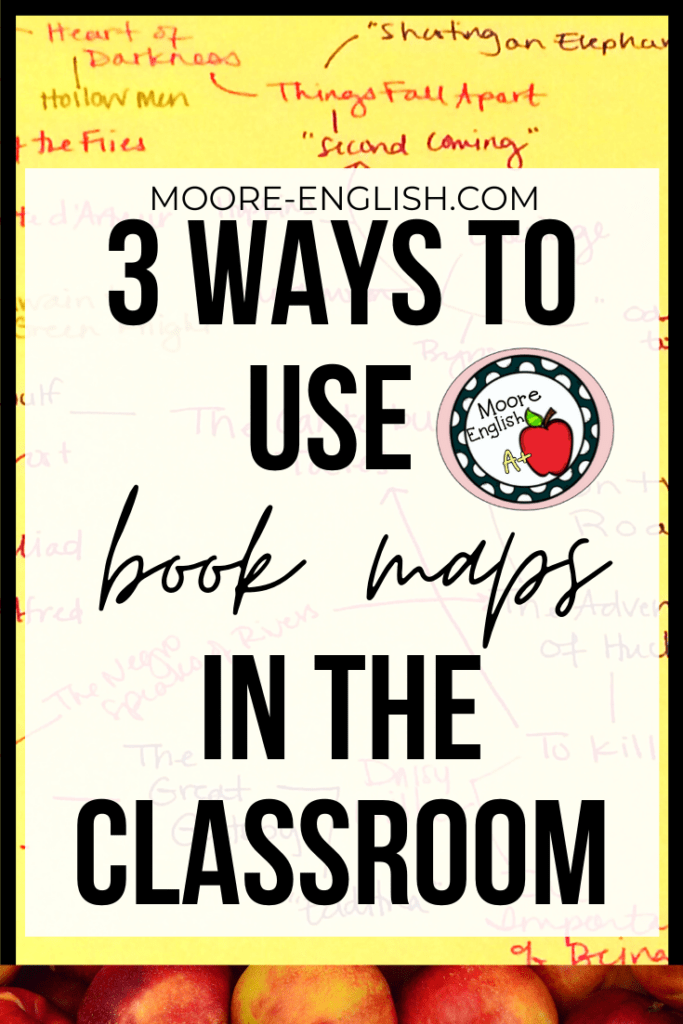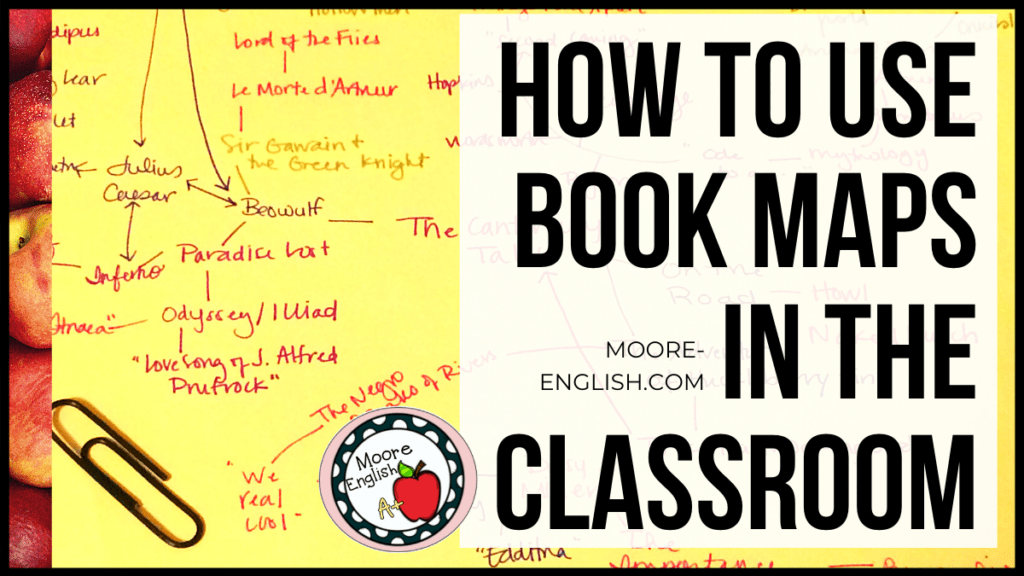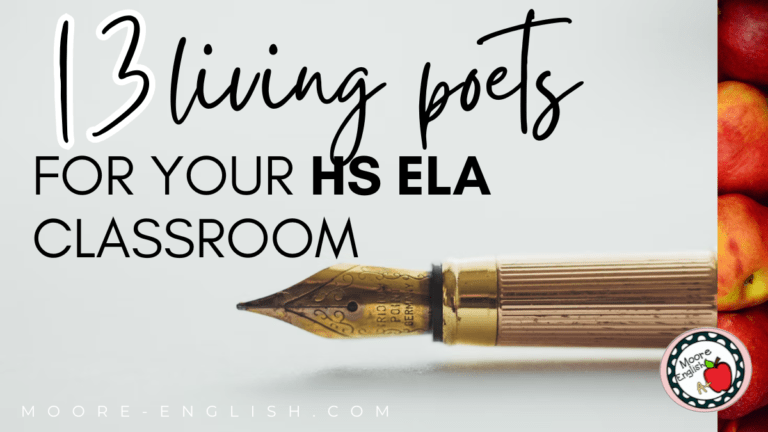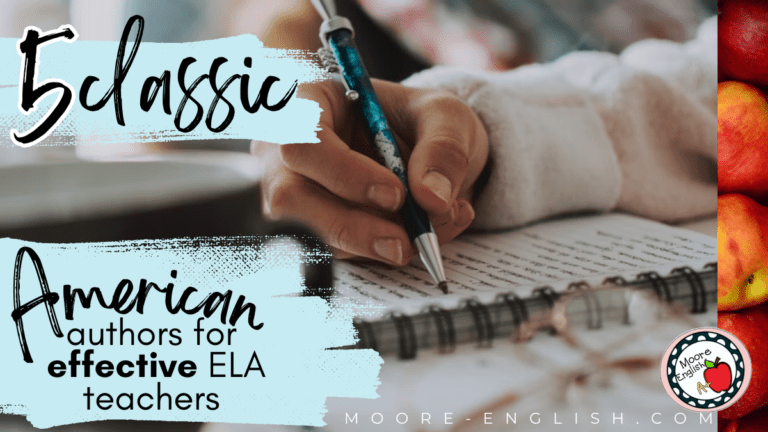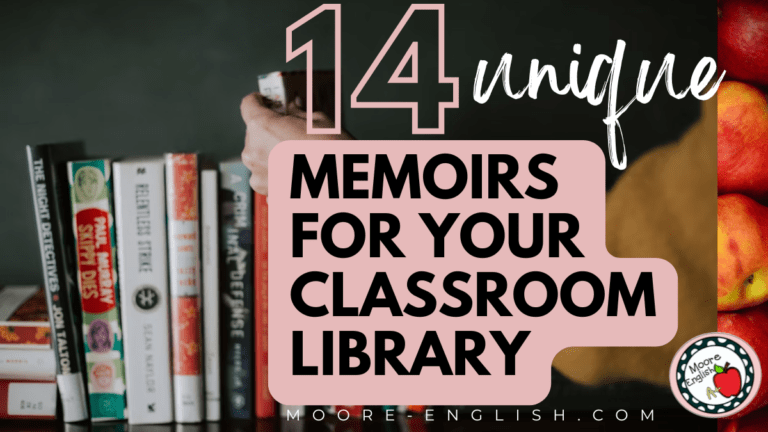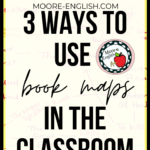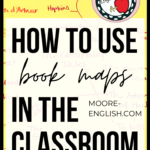After writing about 4 Secondary ELA Must-Have Anchor Charts, I kept thinking about other strategies to help students visualize content. Visualization is an important comprehension strategy because it can help students internalize material, taking ownership of content through interpretation. One of my favorite visualization strategies is to use book maps.
This post this post may contain affiliate links. Please read the Terms of Use.
What is a book map?
A book map looks a lot like a thought web except that each item on the web is a book, an author, or a character. The lines between items represent connections. Some connections are based on shared symbols, historical and cultural contexts, or thematic elements. Basically, students are playing Six Degrees of Kevin Bacon with books. In the book map below, my students were working with The Canterbury Tales and seeking to connect Chaucer’s work to other pieces of literature.
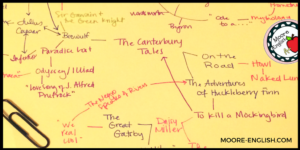
Why use book maps?
In addition to helping students visualize content, book maps also promote synthesis-level thinking in a creative way that appeals to multiple intelligences. In ELA, we talk a lot about the three types of text connections. And while my students can list those types of connections, they often struggle to internalize connections and to approach connections from a creative angle. But using book maps solves these problems. There’s something powerful about students drawing that connector line between potentially disparate texts: that action invites students to take ownership of a connection, allowing them to be creative but to also justify a choice.
What skills suit book mapping?
Flexibility is one advantage of using book maps. A book map can be a bellringer. But it can also be the meat of a lesson. As students connect texts, they are synthesizing. Asking students to justify connections requires students to think critically and to use evidence to support their claims. If students create book maps as a pre-cursor to writing, book mapping becomes a brainstorming strategy. A book map can also be the foundation of meaningful classroom discussion.
How can I use book maps?
Since book maps are so flexible, there are endless opportunities for book mapping in ELA. Here are my favorite opportunities for book mapping.
1. First-Day Activity. Instead of playing a get-to-know you game, students can get to know one another through book mapping. To do this, I model book mapping on the board either by creating a fresh book map or by using the document camera to project my book map on the screen.
However, I want to model this for my students; I want them to know that less-obvious connections are great as long as they are justifiable. After students make their own book maps, they can share with a classmate, which creates a low-stress way to get acquainted with one another. This is also a good way for teachers to get to know student interests and reading experiences. Other first-day activities include:
- Syllabus BINGO
- Syllabus Scavenger Hunt
- 4 Back-to-School One Pagers
- 3 Ways to Use Bucket Lists in the Classroom
- 3 Ways to Use Letter Writing in Secondary English (post here)
2. Literacy Narrative Drafting. Since the Common Core includes narrative writing, my students all write a literacy narrative. I ask students to explore their biography as a reader: what books have they read? Which ones were most impactful? Which ones moved them? Book mapping proves to be a great pre-writing strategy for drafting the literacy narrative.
3. Socratic Seminar Preparation. Prior to participating in a Socratic Seminar or other classroom discussion, ask students to complete a book map. The process of book mapping will help them make deeper connections. Before joining the discussion, ask students to write 2-3 questions based on their book map. Modeling this beforehand will help students write more valuable questions.

